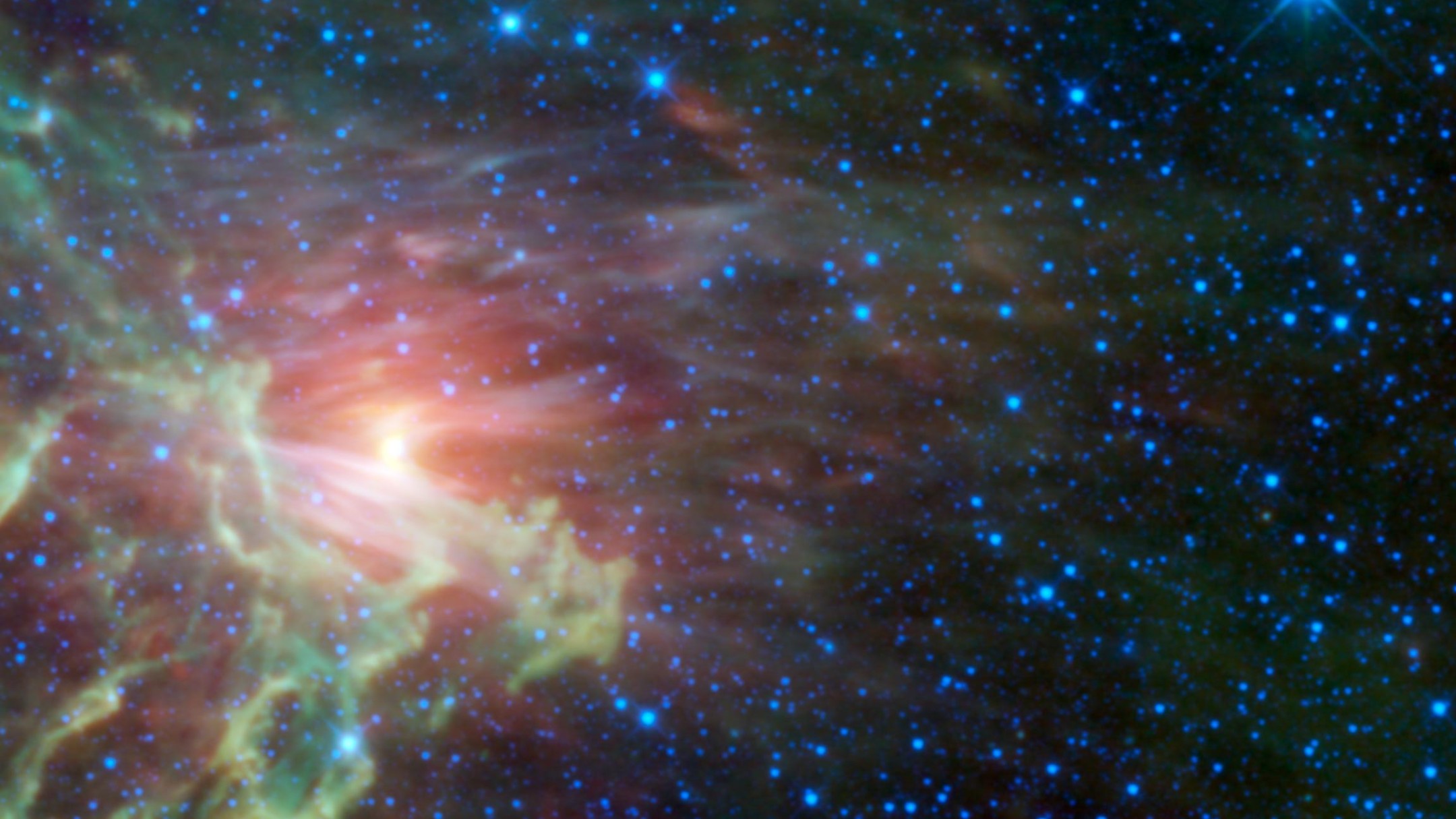
Astronomers have detected the fastest runaway star ever seen in the Milky Way galaxy — the husk of a star launched at blistering speeds from a gigantic cosmic explosion.
The white dwarf, named J0927, was spotted hurtling through space at a stunning 5.112 million miles per hour (8,226,967 kilometers per hour).
Called a hypervelocity star because its speed will one day enable it to entirely escape the gravitational pull of the Milky Way, J0927 was spotted alongside three other fast-moving stars, all of which are thought to be the results of a Type Ia supernova — one of the most violent explosions in the universe. The researchers published their findings June 6 on the preprint server arXiv, and the findings have not yet been peer-reviewed.
Related: 'Green Monster' supernova is the youngest in the Milky Way, James Webb telescope reveals
Type Ia supernovas occur when two stars, one of them the collapsed husk of a star called a white dwarf, fall into orbit around each other. This causes the white dwarf to strip hydrogen from the star it is spiraling around, creating a runaway reaction that ends in a gigantic thermonuclear explosion.
But a simple star explosion isn't enough to launch stars at this speed. Astronomers suspect that hypervelocity stars are sent flying by a special kind of Type Ia supernova called a dynamically driven double-degenerate double-detonation (D6) supernova.
In D6 supernovas, two white dwarf stars spiral each other, one stripping the other of any remaining layers of helium from its surface. This process produces so much energy on the helium-snatching white dwarf's surface that it kick-starts nuclear fusion in the husk once more, sending a shock wave deep into its core that causes it to detonate.
"If a significant fraction of Type Ia supernovae produce a D6 star, the galaxy has likely launched more than 10 million of them into intergalactic space," the researchers wrote in the study. "An interesting corollary is that there should be large numbers of faint, nearby D6 stars launched from galaxies all throughout the local volume passing through the solar neighborhood."
Despite the apparent abundance of these powerful supernovas, evidence for them and the white dwarfs they fire like bullets remains hard to find. To search for some candidates, the researchers turned to the Gaia star catalog, an ongoing project with the goal of creating the most detailed star map of our galaxy ever made.
From the Gaia data, the astronomers spotted the white dwarfs, confirming with follow-up observations of their chemical compositions (almost entirely oxygen and carbon) that the runaway white dwarfs were products of an explosion that stripped away their helium and hydrogen.
Measurements of the white dwarfs revealed that J0927 was the fastest runaway star ever observed in our galaxy, beating the previous record of 4,921,200 mph (7,919,904 km/h) held by the white dwarf D6-1. An additional white dwarf observed in the new study also grabbed the title of second-fastest star ever observed in our galaxy.
The researchers estimate that D6 supernovas might account for half of all Type Ia supernovas, but to know for certain, they will have to locate even more runaway stars streaking through space.
"There is now a sizable population of hypervelocity stars associated with thermonuclear supernovae," the researchers wrote. "Modeling this population will ultimately make it possible to infer the formation rate of thermonuclear runaways and ultimately, the fraction of Type Ia supernovae formed through the double-degenerate channel.”







